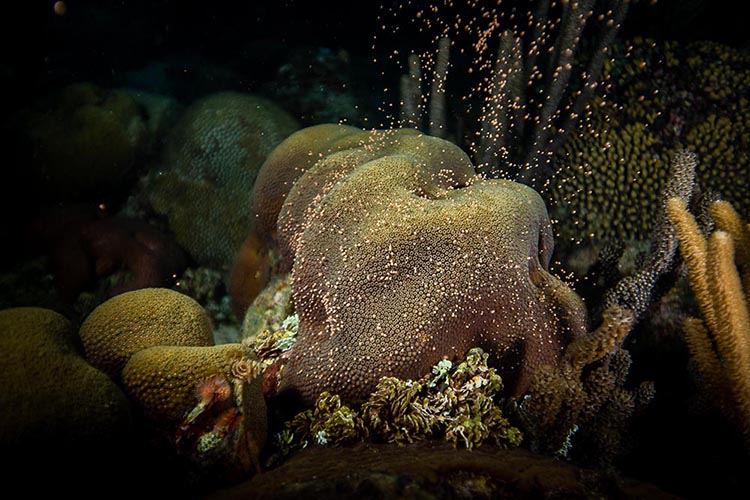
SECORE International‘s coral seeding programme is being hailed as a great success, with its reef restoration initiative now present in nine Caribbean nations
Coral seeding is a process whereby the natural sexual reproductive cycle of corals is carried out in laboratory conditions, before the resulting spawn are redistributed – seeded – across dead or damaged reefs. The process greatly improves genetic diversity across populations of coral species, enabling those that are more resistant to environmental changes to take hold, and build resilience across the wider reef.
SECORE – which takes its name as an acronym for ‘SExual COral REproduction‘ – has developed its coral seeding programme to enable the production of coral larvae on a massive scale. Implementing coral seeding on such large scales, however, requires scientific research and engineering to develop the necessary technologies, as well as training networks of practitioners to implement and adapt the tools and methodologies to local conditions.
In 2017 the Fundación Dominicana de Estudios Marinos (the Dominican Foundation for Marine Studies, FUNDEMAR) became the first organisation to participate in SECORE’s tailor-made coral seeding training programme, with introductory training held in Mexico and Curaçao.
Following initial trials in Dominica, the FUNDEMAR team successfully cultivated eight different species of coral over the next five years of training, including Pillar corals (Dendrogyra cylindrus), a key species that few have been able to breed.


FUNDEMAR’s team has since completed its training and is now a coral seeding training organisation in its own right. The organisation has also taken huge steps towards upscaling the programme, doubling its coral production in 2021 and 2023 when, for the first time, five floating coral nurseries known as Coral Rearing In-situ Basins (CRIBs) were operating simultaneously at one location – the largest coral seeding operation to date.
‘We monitor the health of our marine ecosystems to see the intervention needed on each site, such as with mangroves, seagrasses and especially corals,’, said Rita Sellares, FUNDEMAR’s Executive Director. ‘Since 2019, we have been able to outplant over 40,000 coral substrates in total, each with several tiny corals growing on them, to degraded reef areas.
‘At our current production rate, which has increased by 1000 per cent since the program started 5 years ago,’ added Sellares, ‘we now expect to contribute annually with 20,000 substrates with coral recruits to our reefs in need.’


‘In just five years, FUNDEMAR has grown their coral seeding program from the ground up to probably the largest in the world,’ said Aric Bickel, Director of Technology and Implementation at SECORE. ‘We are very excited about the opportunities as we move into the next phase of our relationship.
‘FUNDEMAR is not only continuing to scale their coral output, but they are greatly increasing the amount of staff, the size of their facilities, and the number of groups they are now training to conduct this work in the region. Each of our organizations are well positioned to continue doing really special work together for years to come.’
The world’s coral reefs have been severely impacted by a series of frequent mass bleaching events, including the fifth such occurrence on the Great Barrier Reef and wide-reaching coral bleaching following a marine heatwave across the Caribbean during the latter half of 2023.
The Caribbean has also been plagued in recent years by Stony Coral Tissue Loss Disease (SCTLD), which has caused considerable coral mortality throughout the region.


Bleaching is not an immediate death sentence, and some of the Caribbean’s bleached coral even managed to spawn during the heatwave, however, many others were unable to recover and died – but SECORE says there is still hope for the world’s reefs.
‘In a recent monitoring, we evaluated bleaching and mortality prevalence, comparing young corals, which were bred using the Coral Seeding approach, with natural colonies, and saw that bred corals suffered half the bleaching losses compared to the co-occurring coral community,’ said Sellares. ‘Through the SECORE implementation network, we know that other Caribbean countries are seeing similar results, demonstrating that assisted sexual reproduction is now our main solution and tool available to face the current reef crises.
‘Seeing our young, bred corals alive and healthy out on the reef, despite all the stressors affecting them in the past years gives us proof that breeding corals for restoration, i.e. applying coral seeding, is the hope to save coral reefs.’



